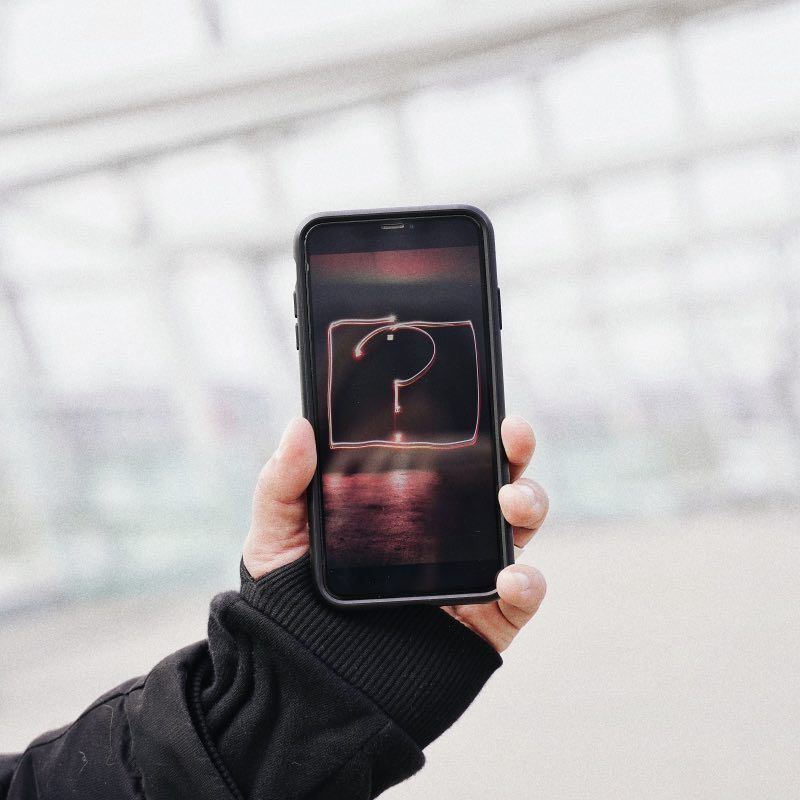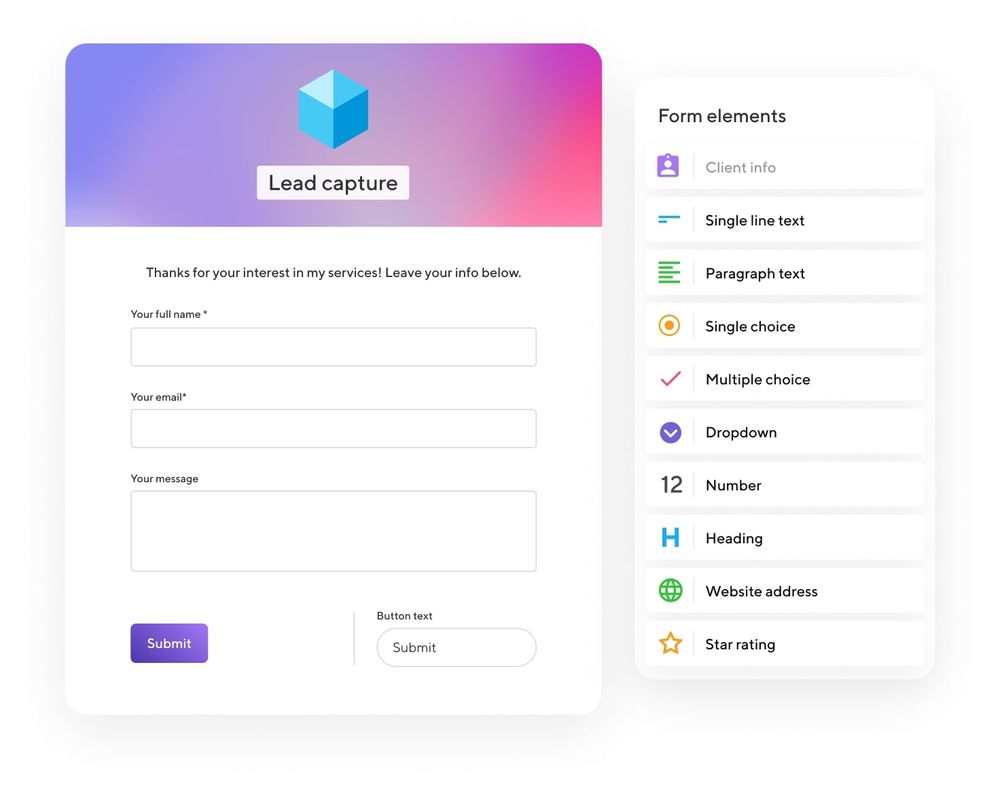In the dynamic world of freelance graphic design, where each pixel and every stroke carries the weight of a brand's identity, understanding your client becomes an art form in itself. This article aims to be your compass, guiding you through the intricacies of client communication.
Whether you're a seasoned graphic designer or a design enthusiast taking the plunge into freelancing, the questions you ask can make all the difference. Let’s delve into 10 crucial questions that not only uncover your client's vision but also form the bedrock of a fruitful collaboration. Buckle up as we unravel the mysteries of client interaction, one question at a time.
The Importance of Having a Questionnaire
But before you dive into these questions, consider the power of having a questionnaire in your arsenal. A well-crafted questionnaire is more than just a list of inquiries; it's a strategic tool that streamlines your communication process and ensures you gather all the essential information efficiently.
Why use a questionnaire?
- Efficiency: A questionnaire allows you to gather vital information about your client's business in a structured manner. It saves time for both you and your client, ensuring that the conversation is focused and productive.
- Consistency: Using a standardized questionnaire ensures that you cover all necessary aspects consistently with every client. No detail is overlooked, and it sets a professional tone for your client interactions.
- Clarity: A questionnaire provides clarity on expectations and project details. It acts as a reference point throughout the design process, reducing the likelihood of misunderstandings.
- Professionalism: Presenting a well-thought-out questionnaire showcases your professionalism. It demonstrates your commitment to understanding your clients and delivering high-quality work tailored to their needs.
10 Must-Ask Questions for Your Graphic Design Clients
Now that we've established that understanding your client is an art form, let's get down to business. Whether you're a seasoned pro or a newbie venturing into freelancing, the questions we're about to explore are your ticket to a smoother client relationship.
No jargon or complexities here – just 10 straightforward questions that will help you get a handle on your graphic design projects. Ready to dive in? Let's go!
1. Tell me about your brand
Every brand has a story, a unique identity that sets it apart in a sea of competition. By asking your client to share the tale of their brand, its history, values, and aspirations, you're not just getting a brief; you're immersing yourself in the essence of their business. This deep dive provides you with the foundational knowledge necessary to infuse their brand identity into your designs seamlessly.
Expanding on this question could involve probing deeper into specific aspects of their brand, such as the origin story, mission and vision, and any particular milestones or challenges they've overcome. Encourage them to share anecdotes that embody the spirit of their brand, fostering a deeper connection and understanding.
2. Who's your target audience?
In the vast tapestry of design, one size does not fit all. Designs are most impactful when they resonate with the intended audience. By understanding the demographics and psychographics of your client's target audience, you're not just creating visuals; you're crafting an experience tailored to captivate and engage a specific group.
To expand on this, delve into the intricacies of their audience – age groups, geographical locations, interests, and lifestyle. Encourage your client to share any market research or customer personas they may have. The more details you gather, the better equipped you'll be to design with precision and purpose.
3. What are your design preferences and dislikes?
Design is subjective, and personal tastes vary. A design that resonates with one person might not with another. By openly discussing your client's design preferences and dislikes, you're laying the groundwork for a collaborative and harmonious relationship.
Further exploration of this question could involve creating a mood board together. Encourage your client to share examples of designs they've loved in the past, whether from competitors or unrelated industries. This visual dialogue not only deepens your understanding but sparks a visual conversation that can unveil unspoken preferences.
4. Can you share examples of designs you admire?
A design language often speaks louder than words. By asking your client to provide examples of designs they admire, you're tapping into their visual vocabulary. This step is akin to learning a new dialect – you gain insights into the nuances of their aesthetic language, helping you craft designs that resonate on a personal level.
To enhance this dialogue, encourage your client to articulate what specifically draws them to those designs. Is it the color palette, typography, or overall composition? Understanding the elements they find appealing provides a roadmap for your creative journey.
5. What is the primary goal of this design project?
Designs are not just pretty pictures; they're powerful tools with a purpose. By understanding the primary goal of the project, whether it's to increase brand awareness, drive sales, or communicate a specific message, you're aligning your creative compass with the client's strategic objectives.
Delve deeper into this question by exploring the metrics of success. How will they measure the impact of the design? Is it through engagement, conversions, or brand recall? This information not only guides your design decisions but also establishes a shared understanding of the project's success criteria.
6. Are there any specific elements you want to include?
Sometimes, clients have specific elements or features they envision in their design. By proactively asking about these details, you're demonstrating a commitment to bringing their vision to life. This question opens the door for collaborative brainstorming, ensuring that essential components are seamlessly integrated into the design.
To deepen this conversation, encourage your client to share any visual references or sketches they may have. This not only provides clarity but also sparks a collaborative energy, turning the design process into a shared exploration.
7. What is your timeline and deadline?
Time is both a precious resource and a critical factor in the world of design. By understanding your client's timeline and deadline, you're not just managing expectations; you're orchestrating your creative workflow effectively. This question ensures that the masterpiece you're crafting aligns with the client's temporal needs.
To expand on this, discuss potential milestones and checkpoints throughout the project. This collaborative scheduling not only keeps the client in the loop but also provides opportunities for feedback and adjustments along the way.
8. How will this design be used?
Different platforms demand different design approaches. Whether it's for print, digital, or social media, understanding how the design will be used helps you tailor your creative output for maximum impact. This question ensures that your design seamlessly integrates with the intended medium, maximizing its effectiveness.
Delve deeper by exploring the user experience on various platforms. How do they envision their audience interacting with the design? Are there any specific functionalities or interactions they have in mind? By aligning your design with the user journey, you're not just creating visuals but crafting an immersive experience.
9. What is your budget for this project?
Let's address the elephant in the room – the budget. While creativity knows no bounds, practicality is a guiding force. By discussing the budget openly, you're not just aligning creative aspirations with financial expectations; you're building a transparent foundation for a collaborative partnership.
To navigate this conversation, explore the scope of the project in detail. Are there any specific deliverables or additional services they have in mind? This detailed discussion not only ensures a clear understanding but also provides opportunities for value-added services that might enhance the overall project.
10. How do you prefer to communicate during the project?
Communication is the lifeblood of a successful project. By understanding your client's preferred communication channels – whether it's emails, calls, or project management tools – you're not just streamlining the process; you're fostering a transparent and collaborative environment.
To amplify this, discuss the frequency of communication and potential touchpoints throughout the project. Regular updates, feedback sessions, and collaborative discussions ensure that both parties are on the same page, fostering a positive and productive working relationship.
Whether they want a new logo design or beautiful images for their marketing campaigns, these 10 questions will help you create a solid graphic design questionnaire to nail your client's vision.
How Can Indy Help?
Whether you're looking to capture new leads or to create a design brief for a new project, Indy's form templates make it super easy to get the information you need from clients.
- Questionnaires: Put these 10 questions into action by easily adding them to Indy's questionnaire template.
- Lead capture forms: Generate new leads and onboard clients into your design business.
- Feedback forms: Collect feedback to get glowing testimonials and improve your processes.
- Project brief: Elevate your client collaborations to the next level with a well-crafted project brief.
Plus, you can create your own custom forms and save them to use again and again. Get started for free today!
A Quick Recap
In the vast landscape of graphic design, where pixels and creativity collide, the art of questioning becomes your most potent tool. These 10 questions are not just checkboxes; they're gateways to help you nail your next graphic design project, whether it's for a logo redesign or any other marketing projects. So, as you set off to decode your client's vision, remember that each question is a brushstroke, contributing to the masterpiece you're co-creating.
If you're looking for a quick way to create questionnaires, there's no better way than with Indy's form templates. Exceed your client's expectations by getting the information you need to create showstopping projects. Get started for free today!
Note: We’d like to thank WebFX for inspiring this piece of content. If you want to learn more about their work, you can find their channel on YouTube.




